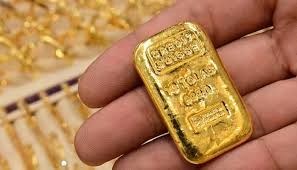Gold, a symbol of wealth and status for millennia, is much more than just a shiny yellow metal. It has captured the human imagination since ancient times, playing a central role in τιμη χρυσου σημερα το γραμμαριο, cultures, and even religious practices. But what makes gold so unique? Let’s delve into its history, value, and significance beyond mere adornment.
A Journey Through Time: The History of Gold
Gold’s story begins thousands of years ago. It’s one of the first metals used by humans, possibly because it’s naturally pure and doesn’t tarnish easily. Early civilizations like the Egyptians revered gold not only for its beauty but also for its permanence. Pharaohs were buried with treasures made of gold, believing that it would ensure their immortality in the afterlife. The ancient Egyptians also crafted elaborate jewelry, creating intricate designs to showcase their skill and the material’s everlasting luster.
By the time of the Roman Empire, gold had become a cornerstone of economic exchange. The Romans established the concept of coinage, and gold coins became a standard form of currency throughout their empire. Gold continued to be the material of choice for rulers and conquerors, who used it to assert power and wealth.
The Economics of Gold: Currency, Standard, and Store of Value
The role of gold in the global economy evolved dramatically over the centuries. The gold standard, which tied national currencies to a specific quantity of gold, dominated the financial systems of much of the world for more than 200 years. While the gold standard was abandoned by most countries in the 20th century, gold still maintains its status as a store of value. Investors often flock to gold during times of economic instability, seeing it as a safe haven against inflation, currency devaluation, and geopolitical tensions.
What makes gold such a reliable store of value is its rarity and durability. Unlike paper currencies or digital assets, gold cannot be printed at will or created artificially. Its scarcity ensures that it retains value over time, making it an attractive investment for those seeking stability in turbulent times. In fact, during times of crisis, such as financial crashes or political unrest, gold prices often soar as people look for tangible assets that can retain value.
Gold in Modern Society: From Jewelry to Technology
While gold’s role as currency may have diminished, it remains an essential part of modern society. One of its most enduring uses is in the creation of jewelry. The lustrous, malleable nature of gold makes it perfect for crafting intricate designs. Throughout history, gold jewelry has been a marker of wealth, love, and identity. In some cultures, it also plays a key role in rites of passage, such as weddings or significant life events.
But gold’s applications go far beyond ornamentation. In today’s technological world, gold is a critical component in electronics. Its high conductivity and resistance to corrosion make it ideal for use in circuits, connectors, and components in devices like smartphones, computers, and medical equipment. In fact, over 300 tons of gold are used annually in electronics, helping to drive the global demand for the metal.


